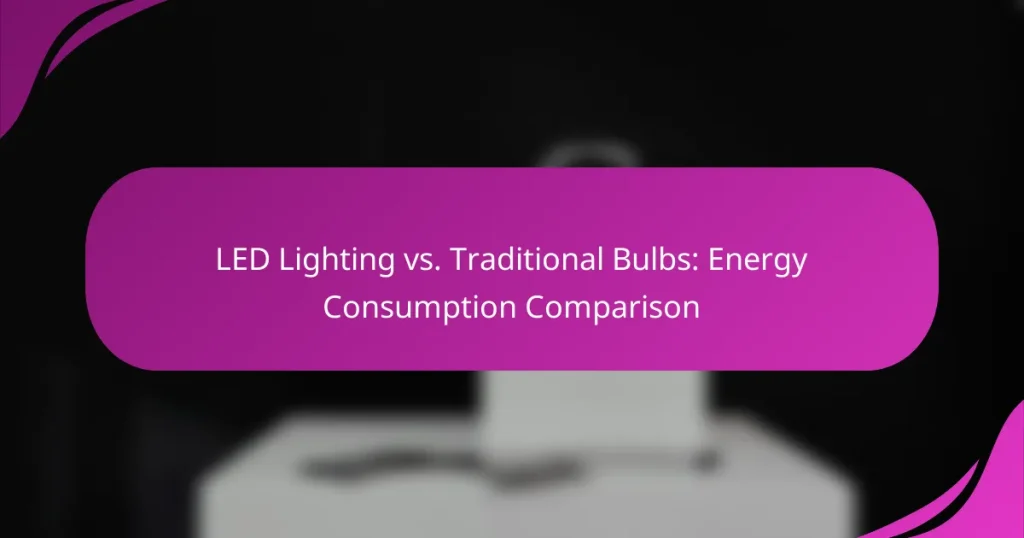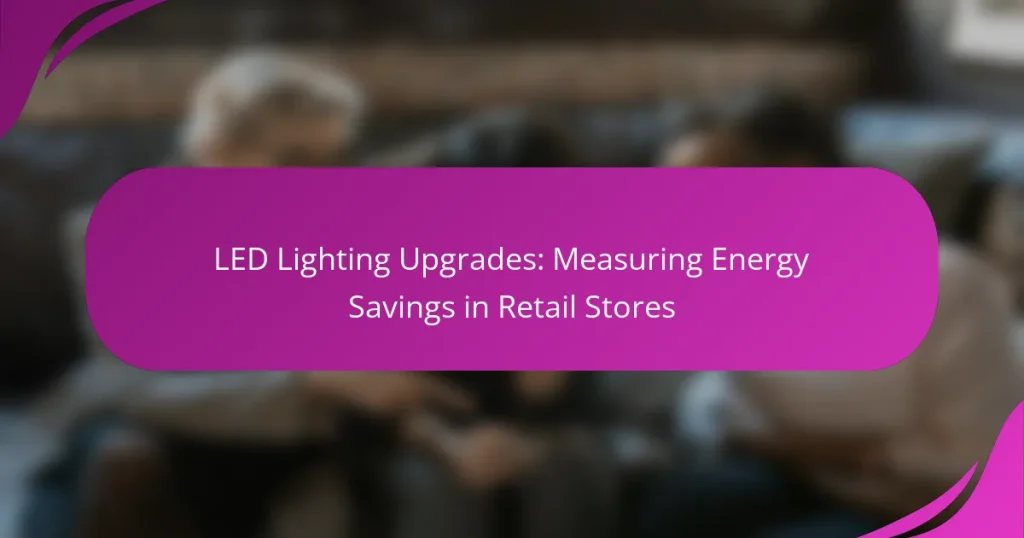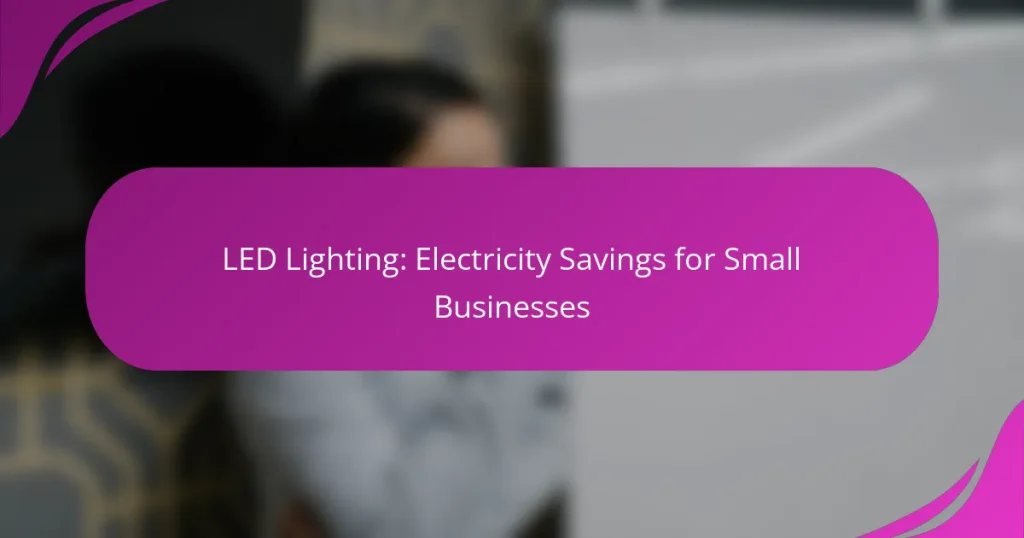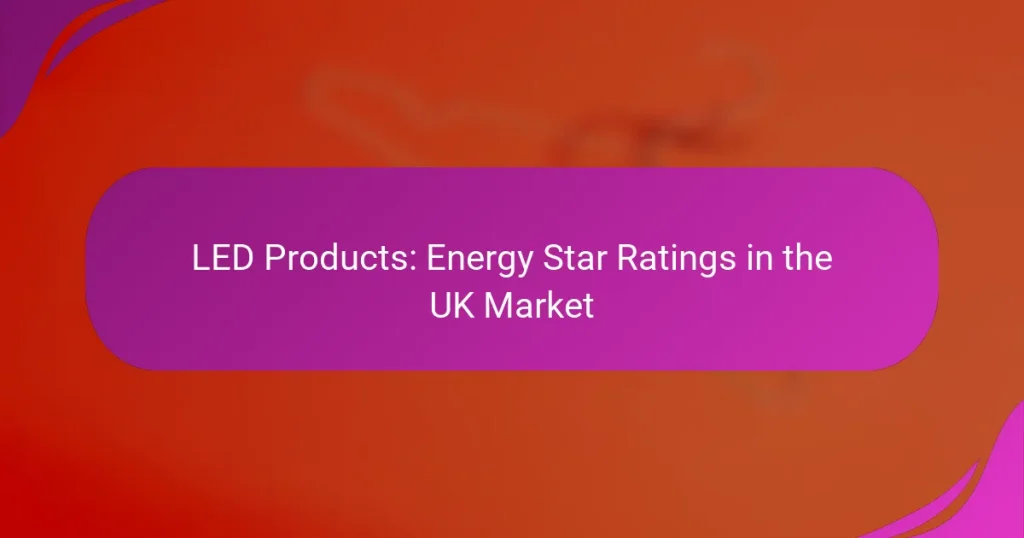LED lighting is revolutionizing energy efficiency in the UK by consuming significantly less electricity compared to traditional incandescent and fluorescent bulbs. This not only results in lower electricity bills but also minimizes environmental impact, making it a sustainable choice. With various options available, including smart bulbs and LED strip lights, both residential and commercial users can enjoy substantial cost savings and reduced maintenance needs over time.
LED Lighting: Impact on Energy Efficiency Ratings in Commercial Spaces
LED Lighting: Environmental Benefits of Switching
LED Lighting Upgrades: Measuring Energy Savings in Retail Stores
LED Lighting: Electricity Savings for Small Businesses
LED Products: Energy Star Ratings in the UK Market
How can LED lighting improve energy efficiency in the UK?
LED lighting significantly enhances energy efficiency in the UK by using considerably less electricity than traditional incandescent or fluorescent bulbs. This reduction in energy consumption translates into lower electricity bills and a decreased environmental impact.
Reduced energy consumption
LED lights consume up to 80% less energy compared to incandescent bulbs. This efficiency means that for the same amount of light output, LEDs require far less wattage, making them a cost-effective choice for both residential and commercial use.
For example, a typical LED bulb might use around 10 watts to produce the same brightness as a 60-watt incandescent bulb. Over time, this can lead to significant savings on energy bills, especially in households and businesses that use lighting extensively.
Longer lifespan compared to traditional bulbs
LED bulbs have a lifespan of approximately 15,000 to 25,000 hours, which is several times longer than traditional incandescent bulbs that last about 1,000 hours. This longevity reduces the frequency of replacements, resulting in lower maintenance costs and less waste.
Choosing LEDs means fewer trips to the store for replacements and less hassle with changing bulbs, making them a practical choice for hard-to-reach fixtures.
Lower carbon footprint
By consuming less energy and lasting longer, LED lighting contributes to a lower carbon footprint. The reduced energy demand means that less electricity needs to be generated, which often comes from fossil fuels, thereby decreasing greenhouse gas emissions.
In the UK, where there is a strong push towards sustainability, switching to LED lighting aligns with government initiatives aimed at reducing carbon emissions and promoting energy efficiency. This shift not only benefits the environment but also supports national goals for a greener future.
What are the cost savings of using LED lighting?
Using LED lighting can lead to significant cost savings through lower energy consumption and reduced maintenance needs. These savings can accumulate over time, making LED technology a financially sound choice for both residential and commercial applications.
Lower electricity bills
LED lights consume considerably less electricity compared to traditional incandescent or fluorescent bulbs. Typically, LED lighting uses about 75% less energy, which can result in monthly electricity bills that are significantly lower.
For example, replacing a standard 60-watt incandescent bulb with a 10-watt LED can save approximately $50 to $100 over the bulb’s lifespan, depending on local electricity rates. This reduction in energy use not only saves money but also contributes to a smaller carbon footprint.
Reduced maintenance costs
LED lights have a much longer lifespan, often lasting 15,000 to 50,000 hours compared to traditional bulbs that may last only 1,000 hours. This longevity means fewer replacements and less frequent maintenance, which translates to lower labor and material costs.
In commercial settings, the reduction in maintenance can be particularly impactful. For instance, businesses that switch to LED lighting can save on costs associated with replacing bulbs in hard-to-reach areas, such as high ceilings or outdoor fixtures.
Return on investment timeline
The return on investment (ROI) for LED lighting typically occurs within 1 to 3 years, depending on usage patterns and local energy costs. Initial costs may be higher, but the savings on energy bills and maintenance quickly offset these expenses.
To maximize ROI, consider conducting an energy audit to assess current lighting and identify potential savings. This can provide a clearer picture of how quickly the investment in LED technology will pay off in your specific situation.
What are the best LED lighting options for homes in the UK?
The best LED lighting options for homes in the UK include smart LED bulbs, LED strip lights, and LED recessed lighting. Each type offers unique benefits, making them suitable for various applications and preferences.
Smart LED bulbs
Smart LED bulbs are versatile and can be controlled remotely via smartphone apps or voice commands. They often allow users to adjust brightness and color temperature, providing customizable lighting solutions for different moods and activities.
When selecting smart LED bulbs, consider compatibility with your existing smart home systems, such as Amazon Alexa or Google Assistant. Look for bulbs with a good energy efficiency rating to maximize savings on your electricity bill.
LED strip lights
LED strip lights are flexible and can be installed in various locations, such as under cabinets, along shelves, or in coves. They provide a continuous line of light, enhancing aesthetics and ambiance in any room.
When using LED strip lights, ensure they are rated for the intended environment, especially in areas exposed to moisture. Additionally, consider the length and brightness of the strips to achieve the desired effect without overpowering the space.
LED recessed lighting
LED recessed lighting, or downlights, is ideal for creating a clean, modern look in any room. They are installed into the ceiling, providing a streamlined appearance while effectively illuminating spaces.
When choosing LED recessed lights, pay attention to the beam angle and lumen output to ensure adequate lighting for the area. It’s also important to select fixtures that are compatible with dimmer switches if you want adjustable brightness levels.
How do LED lights compare to traditional lighting?
LED lights are significantly more energy-efficient than traditional lighting options like incandescent and fluorescent bulbs. They consume less electricity while providing the same or even better illumination, making them a cost-effective choice for both residential and commercial use.
Energy efficiency ratings
LED lights typically have energy efficiency ratings that are much higher than those of traditional lighting. For instance, while incandescent bulbs convert only about 10% of energy into light, LEDs can convert up to 90%. This means that switching to LED can reduce energy consumption by 50-80% compared to older technologies.
When evaluating energy efficiency, look for the Energy Star label, which indicates that the product meets strict efficiency guidelines set by the U.S. Environmental Protection Agency. This can help consumers make informed choices that lead to lower electricity bills.
Heat generation differences
One of the key differences between LED lights and traditional lighting is heat generation. LEDs emit very little heat compared to incandescent bulbs, which waste a significant amount of energy as heat. This lower heat output not only makes LEDs safer to use but also reduces the need for additional cooling in spaces where they are installed.
In practical terms, this means that using LEDs can contribute to a more comfortable indoor environment, especially in warmer climates. Additionally, less heat generation can extend the lifespan of fixtures and reduce maintenance costs.
Light quality and color temperature
LED lights offer a range of light quality options and color temperatures, making them versatile for various applications. They are available in warm white, cool white, and daylight options, allowing users to choose the ambiance that best suits their needs.
When selecting LED lighting, consider the color temperature measured in Kelvin (K). For example, a warm white light typically ranges from 2700K to 3000K, while daylight options can be around 5000K to 6500K. This flexibility enables users to create the desired mood in homes, offices, and retail spaces.
What factors should be considered when choosing LED lighting?
When selecting LED lighting, consider brightness, color rendering, and energy consumption. These factors will significantly impact the effectiveness and efficiency of your lighting solution.
Brightness and lumens
Brightness in LED lighting is measured in lumens, which indicates the amount of light emitted. For general indoor use, aim for around 800 lumens for a standard 60-watt incandescent bulb replacement.
Higher lumen ratings are suitable for spaces requiring more light, such as kitchens or work areas. Always check the lumen output on the packaging to ensure it meets your needs.
Color rendering index
The color rendering index (CRI) measures how accurately a light source displays colors compared to natural light. A CRI of 80 or above is generally recommended for residential settings to ensure colors appear vibrant and true.
For tasks requiring precise color differentiation, such as painting or makeup application, consider LEDs with a CRI of 90 or higher. This will enhance the visual quality of your environment.
Wattage and energy consumption
Wattage indicates the energy consumption of LED bulbs, which is typically much lower than traditional bulbs. For example, a 10-watt LED can produce the same light output as a 60-watt incandescent bulb, resulting in significant energy savings.
When choosing LED lighting, look for Energy Star-rated products, which meet strict efficiency guidelines. This not only reduces your electricity bill but also contributes to environmental sustainability.
What are the environmental benefits of LED lighting?
LED lighting offers significant environmental benefits, primarily through reduced energy consumption and lower emissions. By using less electricity, LEDs contribute to a decrease in the overall demand for power generation, which is often reliant on fossil fuels.
Reduction in hazardous materials
LED lights contain fewer hazardous materials compared to traditional lighting options like fluorescent bulbs. For instance, they do not contain mercury, which poses health risks and environmental hazards during disposal. This reduction in toxic substances makes LED lighting a safer choice for both consumers and waste management systems.
Moreover, the manufacturing process of LEDs typically involves fewer harmful chemicals, contributing to a cleaner production cycle. This shift not only protects the environment but also promotes safer working conditions in manufacturing facilities.
Lower greenhouse gas emissions
Switching to LED lighting can lead to a significant reduction in greenhouse gas emissions. Since LEDs are more energy-efficient, they require less electricity, which in turn decreases the amount of fossil fuel burned for power generation. This reduction can translate to lower carbon dioxide emissions, benefiting the climate.
For example, replacing incandescent bulbs with LEDs can reduce energy consumption by about 75% or more. As a result, households and businesses that make this switch can contribute to substantial emissions reductions over time, supporting global efforts to combat climate change.





